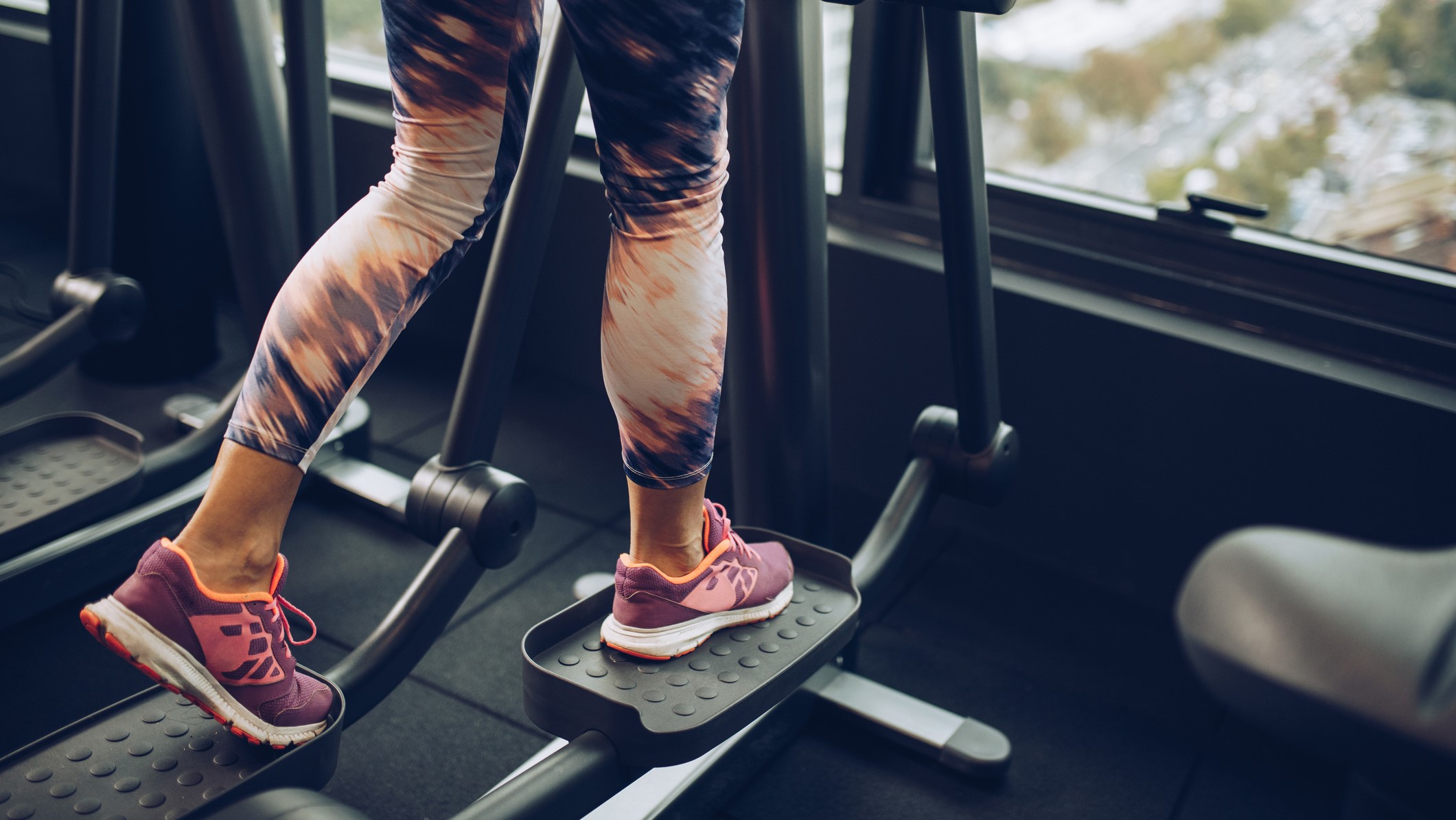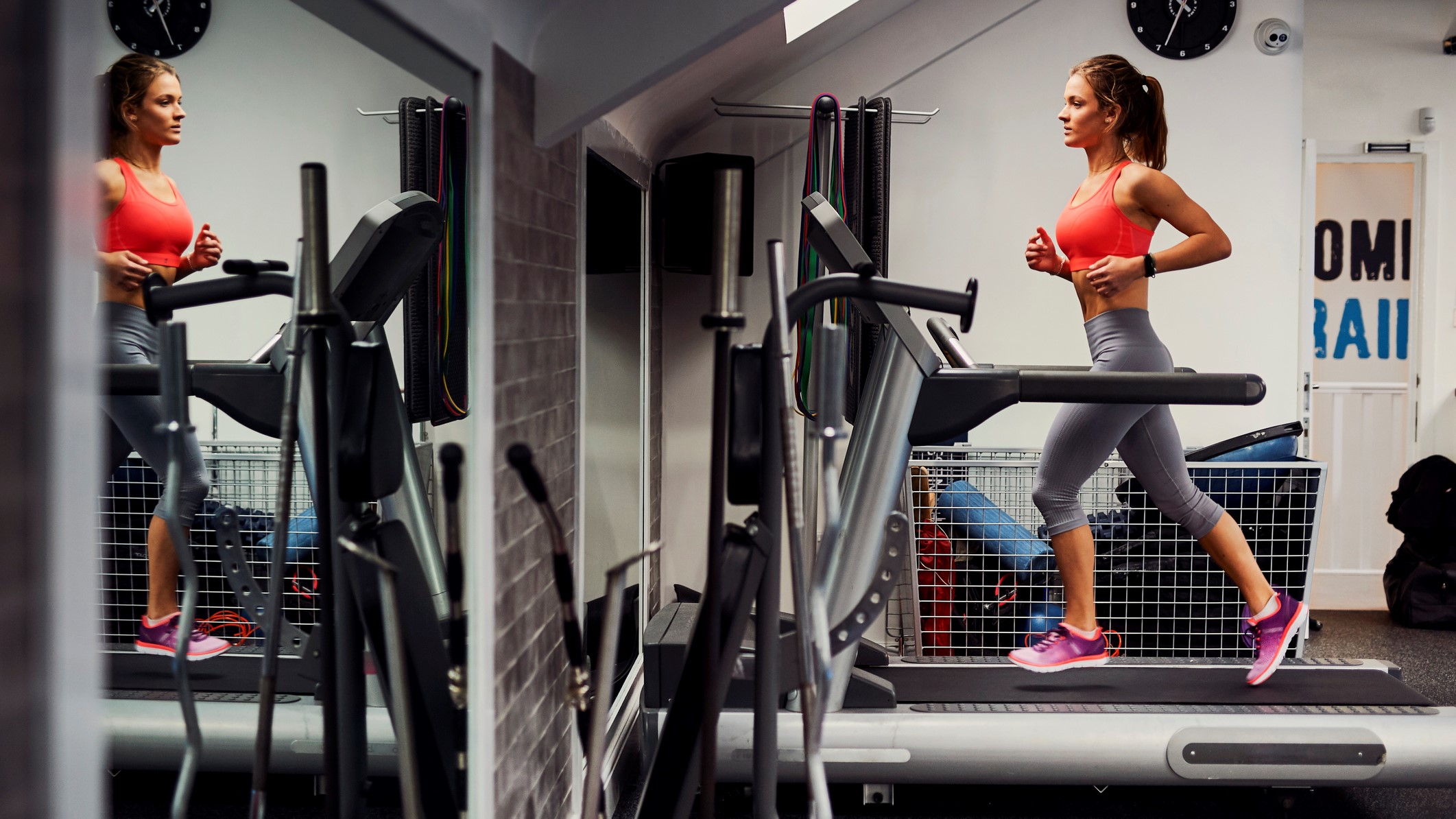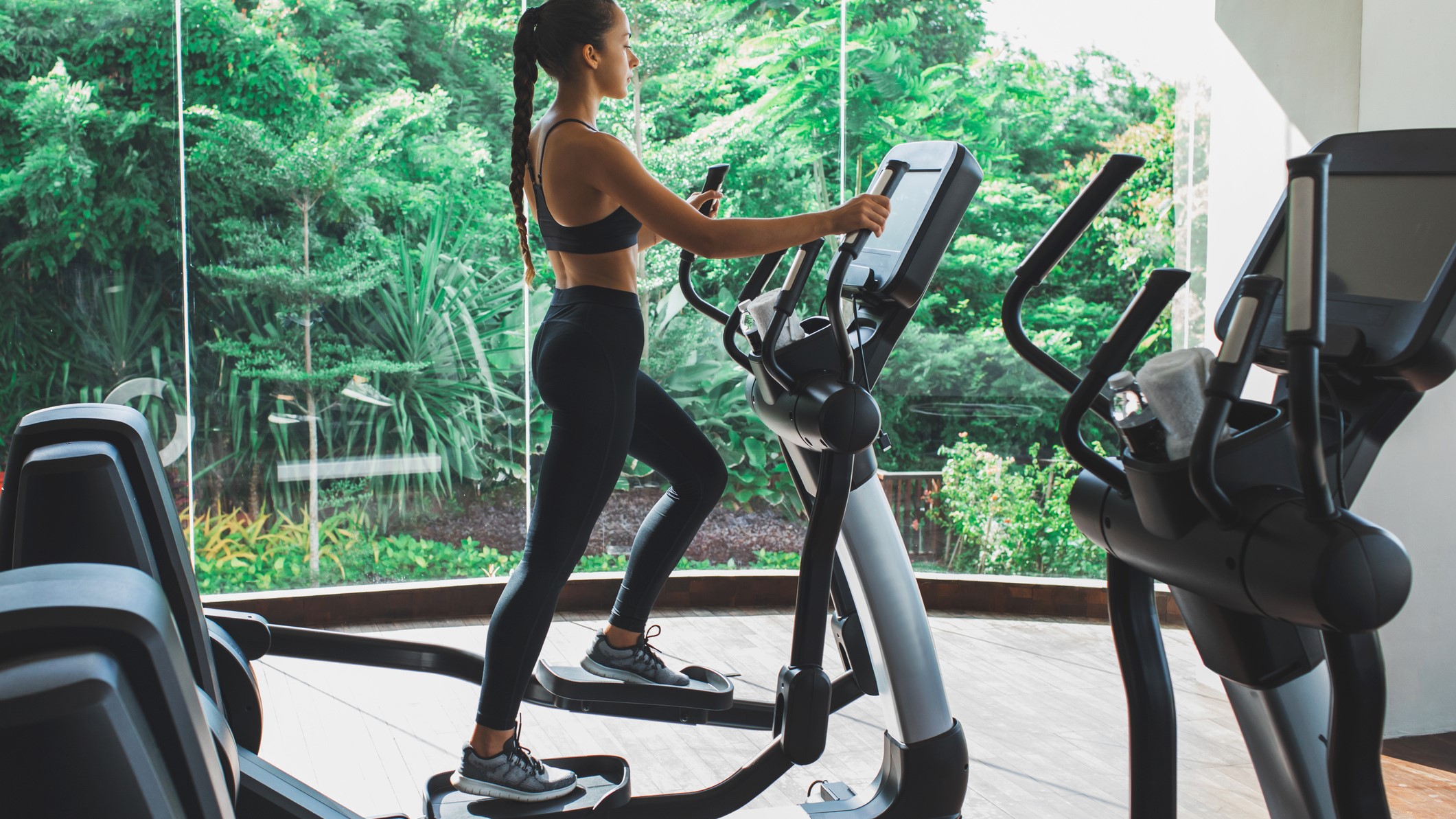Elliptical vs treadmill — which is best for you?
Here’s how to decide which you should use on your next trip to the gym

When it comes to working out indoors, the elliptical and treadmill are both popular choices, but if you’ve ever wondered which cardio machine is better, we’re here to help. In this article, we’ll round up the pros and cons of each machine to help you work out what to do next time you’re in the gym.
An elliptical machine, sometimes called a cross trainer, requires you to place your feet on two platforms, and hold onto two handlebars. From here, you walk or run, moving in an ellipses, or oval shape. It’s very low-impact, and is a handy tool for those who suffer from joint issues, or runners returning from injury.
The treadmill, on the other hand, requires you to walk, jog, or run, on a moving belt, mimicking the movement of any of these activities outside. You can control the speed of the belt, as well as its incline, and the surface is softer underfoot than concrete or asphalt. (Is running on a treadmill better than running outside? We answer here).
Although there are similarities between the two machines, and both are great for keeping active and helping you reach your fitness and health goals, there are some key differences.

Elliptical machine: The pros
One of the biggest pros of using the elliptical is that it’s easier on your joints, as your feet are constantly connected to the pedals, which reduces the impact and causes less strain on your joints. This makes the cross trainer a brilliant option for beginners, those who suffer with joint issues, or anyone returning from an injury.
Of course, less impact might sound like using the elliptical is the easier option, but it’s not. Studies have shown you can burn the same amount of calories on an elliptical as you do on the treadmill if you use it aggressive manner with the arm poles, while other studies have suggested it might just feel easier on the elliptical, thanks to a higher perceived level of exertion. Either way, you can get your heart rate up, and burn calories on this machine.
Another huge plus when comparing the elliptical to the treadmill is that the cross trainer works the entire body. As you push and pull the handlebars as you move, you’re working your upper body while also targeting your legs. If you move your legs forward on the elliptical, you’re hitting the glutes and hamstrings, and if you move your legs backwards, you’ll work your calves and quads (although pedaling backwards is obviously more challenging).
Sign up to get the BEST of Tom's Guide direct to your inbox.
Get instant access to breaking news, the hottest reviews, great deals and helpful tips.
Elliptical machine: The cons
The very obvious downside of the elliptical machine is that, for most sports, this isn’t a very ‘natural’ movement. In fact, you might get on the cross trainer for the first time and think ‘how do I work this thing,' whereas that’s unlikely to happen on a treadmill. If you’re a runner, you might be targeting your leg muscles, but you won’t be working on your stride or form on the cross-trainer.
Due to the low-impact nature of the cross trainer, you also won’t be building up as much strength in the muscles as you would be on the treadmill. This isn’t necessarily a bad thing, and if you already have strength training as part of your workout routine, it’s probably not worth worrying about, but it is worth mentioning.

Treadmill: The pros
One of the huge benefits of the best treadmills is that they mimic the movement of running, or walking, outside, without the weather. If you’re a runner, using a treadmill is a great way to strengthen the muscles you’ll need on race day, while being able to control the conditions. Plus, even if you’re not a runner, the chances are you’re not going to have to ‘learn’ how to use a treadmill.
Another huge plus of the treadmill is that it gives you huge versatility, as you can control the pace and incline at the push of a button. Whether you want to torch calories by power walking up hills, or do some sprint intervals, you have complete control.
Your legs will also receive a little less impact running on the treadmill than they do running outdoors, especially if you run on pavement. Although it’s more impact than on the elliptical, studies have shown that it isn’t all bad, and can actually help build stronger bones.
Treadmill: The cons
Like running outside, running inside has a higher injury risk than the elliptical, because it’s higher-impact. That said, some of the most common running injuries, including shin splints, stress fractures, and knee pain, can all be caused by doing too much too soon, so if you are new to the treadmill, take things slowly, and be sure to warm-up before jumping on.
Unlike the elliptical, you won’t directly work your upper body when using a treadmill. Sure, you’ll target your arms and core as you swing them, but it’s not as targeted. Again, not a bad thing if you’re strength training already (take a look at these resistance band arm exercises to work your upper body without weights).

What are the best workouts to try?
One thing both these cardio machines have in common? They can get boring, fast. If you find yourself watching the minutes tick by, why not try one of these workouts when you’re next in the gym?
Elliptical workout
Try to keep the following in mind before tackling this 35-minute workout:
* The speed corresponds to your stride (in SPM = strides per minute).
- Keep your back straight and look directly in front of you. Do not look at your feet as this will round your back.
- Place your hands on the handles on the heart rate sensors, but not too low as this may cause you to lean forward.
- Ensure the movement of the legs is fluid and "elliptical," that is to say, form the shape of a flattened circle). It may take a while to get used to it at first but then it comes naturally.
| Time (mins) | Resistance | SPM* | Action |
| 00:00-3:00 | 3 | 130 | Warm up |
| 3:00-5:00 | 5 | 130 | Warm up |
| 5:00-10:00 | 5 | 140 | Sprint |
| 10:00-15:00 | 7 | 140 | Backward |
| 15:00-20:00 | 7 | 140 | Forward |
| 20:00-22:30 | 7 | 140 | Hands - Push |
| 22:30-25:00 | 5 | 130 | Hands - Pull |
| 25:00-30:00 | 5 | 140 | Forward no hands |
| 30:00-35:00 | 3 | 130 | Cool down |
Treadmill workouts
We’ve found the best treadmill workouts for all levels of runner here, as well as this 12-3-30 viral TikTok treadmill workout.
Elliptical vs treadmill: Which is best for you?
Unfortunately, there’s no big reveal or true winner here — the best cardio machine for you will be the one that suits your goals and needs best, and that you actually enjoy using. Both machines will give you a brilliant workout and help you get fitter.
If you’re a runner, or you’re training for your first 5K (here’s how to train for a 5K and the best running shoes to shop), you’re better off spending your time on the treadmill as it will help you work on your running stride, and get better results outside. That said, you could still use the cross trainer on easy days, or as active recovery.
If you’re completely new to the gym, or have suffered knee injuries in the past, the elliptical will help you get a great cardio workout, without putting as much pressure on your joints. That said, you could also try walking on the treadmill for short periods of time, and building up.

Jane McGuire is Tom's Guide's Fitness editor, which means she looks after everything fitness related - from running gear to yoga mats. An avid runner, Jane has tested and reviewed fitness products for the past five years, so knows what to look for when finding a good running watch or a pair of shorts with pockets big enough for your smartphone. When she's not pounding the pavements, you'll find Jane striding round the Surrey Hills, taking far too many photos of her puppy.
